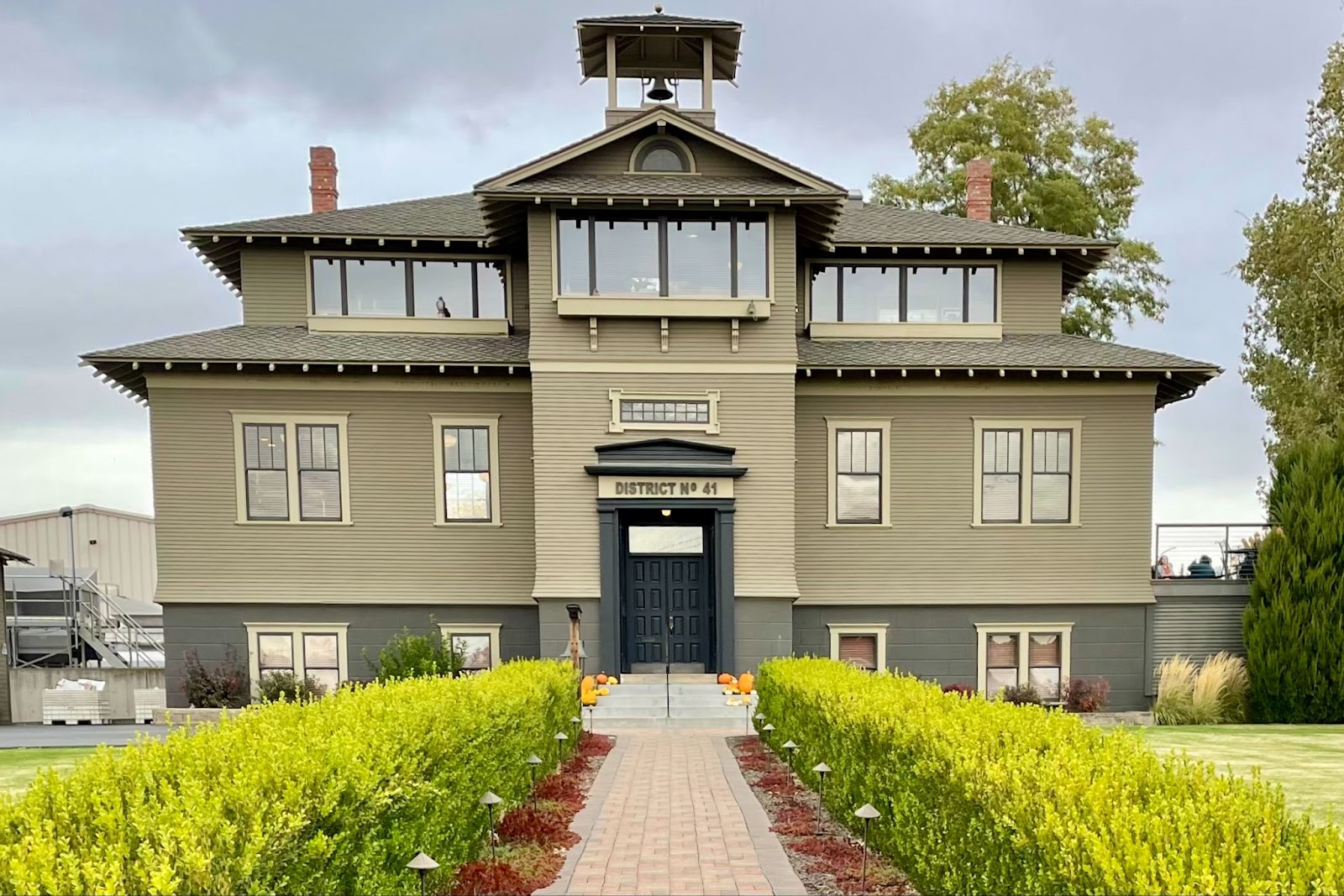The Math of Making Wine
Key Points
-
Like every other sector, winemaking today is computational.
-
It is not only highly responsive to the industry, it participates through student enterprise and work-based learning.
-
After four seasons, Marcus Rafanelli joined L’Ecole as Winemaker and his story underscores the value of work-based learning in high school and college.

The old school house bell rang on a late October afternoon as the last bin of red wine grapes of the 2022 season was emptied into a shorting machine. “It’s been a very good growing season,” said owner Marty Clubb smiling on the front steps of a century-old school building home to his family winery for four decades.
Years of projections come to fruition in the fall with a sprint to process thousands of bins of grapes. They arrive at the winery in an orchestrated sequence leading to the dance of forklifts–unloading, stacking, processing, and cleaning bins.
L’Ecole N° 41 was one of the first wineries in the Walla Walla Valley of southeastern Washington. The winery’s name is French for “the school” and is in school district 41.

By Halloween, winemaker Marcus Rafanelli has worked 42 long days in a row to process the bumper crop. An hour before dawn, he opens the bay doors to air out the carbon dioxcide-filled warehouse and begins to taste the fermentation of every bin of grapes. His taste buds are aided by a biochemistry analyzer that tracks the properties of each fermenting bin.
To begin transforming grape sugars into ethanol and carbon dioxide, Rafanelli selects the type and amount of yeast for each bin with a working assumption about the wine that it will become. He tracks the location, temperature and chemistry of each bin on a mobile application.
Wine storage is a tradition evolving into a subscience. Wooden barrels, stainless steel and concrete all offer relative benefits. Barrels are the traditional storage vessel and impart flavor to the wine depending on age and level of toasting. Rafanelli is running A/B tests on the level of barrel charring and the resulting flavor characteristics.
Barrels are rehydrated with steam before filling–cause for another logistical orchestration. “It’s like cooking with forklifts,” said Rafanelli. The number of barrels needed by day, by vintage, by level of toasting–there’s a spreadsheet for that. The barrel inventory is a big math modeling subset of the production forecast.
Across 20 labels, L’Ecole produces more than 50,000 cases of wine a year from owned and managed Columbia Valley vineyards. The viniculture to produce each case is a complex application of geology, meteorology, agronomy, chemistry, material science, and market research–a mix of art and science, tradition meets big data, apprenticeship plus lean startup.
From a rack of monitors on his desk, Rafanelli monitors and models every acre, bin, barrel, and bottle of wine–a dynamic 3D Tetris puzzle that flows on an annual cycle from a regional ecosystem to a bottle on a retail shelf near you.
Lessons from L’Ecole
While learning winemaking at Walla Walla Community College, Rafanelli served as an intern at L’Ecole. After making wine around the world for a decade, he returned to WWCC as an instructor and Cellarmaster at College Cellars, the college’s commercial teaching winery. After four seasons, Rafanelli joined L’Ecole as Winemaker. His story underscores the value of work-based learning in high school and college to explore possible futures and build social capital.

The viticulture program at WWCC is a valuable pathway partner to the Washington wine industry. It is not only highly responsive to the industry, it participates through student enterprise and work-based learning.
Like every other sector, winemaking today is computational. No one in wine country is factoring polynomials, but every day is multivariable problem solving conducted through complex computer modeling. It’s data science, probability and statistics, and return on investment in real-time.
Like winemaking, every sector has become complex and computational–diverse teams working on novel problems using smart machines–and that demands a new approach to math education. Rather than the typical plug and chug of Algebra 1 and 2 where most of the time is spent on obscure hand calculations, a modern approach to math spends more time defining questions, abstracting them to computable forms, using smart tools to compute answers, and analyzing results (using a computing thinking process). A spiral of real-world problem solving and increasingly complex systems modeling incorporating probability distributions and time value of money should replace most of the hand calculations that dominate math education in American secondary schools.
Exposure to possible futures, work-based learning including internships and entrepreneurial experiences, cycles of real-world problem solving using smart tools, and opportunities to do work that matters to the learner and the community–these are key to new pathways to opportunity.





0 Comments
Leave a Comment
Your email address will not be published. All fields are required.